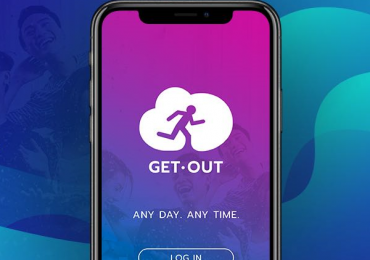10 Hottest Digital Marketing Trends of 2019


In the current high-tech, internet-connected era, marketers need to constantly educate themselves on the latest trends to succeed in their efforts.
We love to review innovation in digital marketing. It’s interesting to see what’s new, what’s hot, and what’s trending. Marketing strategies that worked last year may not be relevant this year. Did AI and ML change the game? Is Content Still King in 2019? We’ve asked digital marketers on our platform to share their thoughts and place their votes.
Here are the hottest digital marketing trends in 2019 and beyond.
1. Micro-Moments
Micro-Moments are those moments when we turn to our smartphone to take action on whatever we need or want right now.
We don’t think about what’s for dinner all day long, yet we generally make instant decisions on what to eat, what to purchase goods or where to go, so the basic Micro-Moments that every marketer should be aware of are:

How can you take advantage of these micro-moments as a digital marketer? You need to be where consumers are at that exact moment – “be there, be useful, be quick.”
Micro-moments as a concept is here to replace the linear buyer’s journey: awareness, consideration, and decision. More and more marketers are realizing that customers are not as predictable and they don’t always follow the buyer’s funnel in their purchasing decisions. These days people think of or talk about something and fast! They need to learn about it, see it, try it out. Instantly. And they are heavily dependent on smartphones when it comes to making a decision.
To get the most out of micro-moments, you should:
- Identify your customers’ “I-want-to-buy” moments
- Be present in these moments of need
- Deliver relevant content for each moment
- Make an item or a service easy to purchase
This concept really highlights the quality, relevance, and usefulness of reactive digital marketing. Look into it and see how micro-moments marketing can help you reach your customers.
2. Omni-Channel Marketing

Step aside, multi-channel marketing, omni-channel marketing is the new buzzword of 2019.
In a nutshell, omni-channel marketing is the process of using multiple platforms (such as social media, apps or blog content) to give your audience a multi-channel experience.
Marketers now need to provide a seamless experience, regardless of channel or device.
Companies using three or more marketing channels can see an uplift in engagement rates (18.96% on omnichannel vs 5.4% on single-channel) and customer retention rates.
For example, Sephora created an omni-channel experience that connects its shoppers’ online purchases to their in-store visits. In addition to beauty workshops and sampling, customers can now use in-store tablets to access their account while shopping. More importantly, their first-time visitors have an easy way to opt-in while shopping.

To stay afloat, brands need to send a consistent message across all available mediums, including physical stores, Social Media channels, landing pages, etc. Interlinking different channels and creating a seamless transition between devices is not an easy task, but a necessary one.
3. Hyper-Personalization
Stats show that 63% of consumers are highly annoyed with generic advertising, and 90% of them claim they find personalization appealing.
In order to stand out in 2019, you need to truly personalize your marketing, and it goes far beyond personalized ads. It’s time to focus on personalized content, product suggestions, and pricing. These days marketers have access to data like purchase history, consumer behavior online, as well as cutting-edge software to implement campaigns.
Spotify marketing campaign is a great example of leveraging the power of personalization. They collected the incredible amounts of data and used it to target consumers in a fun way.

Each billboard showcased a message personalized to individual users, such as “Dear person in the Theater District who listened to the Hamilton Soundtrack 5,376 times this year, can you get us tickets?”
Not only someone of their customers were individually recognized, but it definitely made thousands of people laugh. Your customers trust you with their data so they can get the most personalized message there is… and it doesn’t have to be a sales pitch.
4. Artificial Intelligence

Use Artificial Intelligence in marketing.. before it takes over the world.
Gartner analysts predicted that by 2020 AI technologies would be pervasive in almost every new software product or service. Are you actively using AI? It will soon be the driving force behind many services, and it’s already being used in areas like customer service, product recommendations, content creation, and marketing personalization.
It can analyze consumer behavior and search patterns and data from social media channels to help you understand how customers interact with your product. AI is widely used in product recommendations. You have probably seen recommendations for products you’re interested in as “customers who bought this item also bought”. Yep, these recommendations were most likely brought to you by AI.
Not ready to implement AI yet? Consider using relevant AI-powered tools and services if you want to accelerate growth and get an edge over your competitors.
5. Content Marketing Dominates SEO
If you are following the latest SEO trends, you are aware of Google’s latest search algorithm update. And it seems like well-researched, regularly updated articles are being heavily favored.
Content marketing costs 62% less than outbound marketing and brings in a great amount of traffic.
Of course, it’s not just the SEO you should care about when creating content. Create relevant content to attract new customers to your site, and solve their problems to build long-lasting relationships.

For example, Rip Curl’s online publication known as The Search promotes the ultimate surfing lifestyle, features stunning photos and stories told by surfers for surfers. Helpful non-promotional content is the best way to win your customers hearts and minds.
6. Video Marketing
Video is no longer just one of the content types, it’s central to most brands’ outreach strategy. In fact, video is the most popular way to learn about new products or services. Photos, no matter how stunning, can no longer compete with engaging videos when it comes to telling a story. For example, #FriendsFurever is a short marketing campaign run by Google to promote its Android subsidiary.
Some marketers would argue that video content is too pricey to produce, we assure you that the era of expensive branded videos is over. These days you can shoot a high-quality video with your smartphone, and there are plenty of inexpensive video editing tools on the market.
And let’s not forget about social media Stories! Marketers use Instagram and Facebook stories to reach younger audiences and increase brand awareness. Stories are cost-effective and less invasive than advertising.
There’s a video format for every market: explainer videos, how-to videos, animated videos, live videos. Pick what suits your brand best.
7. Chatbots
How many customer support specialists we chat with are actually robots? Most of them.
This AI-based tool uses instant messaging to chat in real-time with your customers. Chatbots are getting smarter every year and they are now placed on websites, landing pages, within apps, and more.

World-famous Facebook-hosted chatbot from VentureBeat
Top benefits of chatbots include 24-hour service and instant responses to inquiries. Chatbots are not humans, but they might be just as helpful when it comes to responding to frequently asked questions fast.
8. User-Generated Content
User-generated content refers to the content created by the users of a brand. It can be anything from comments and photos to social media posts and stories. Millennials and Gen Z customers are hard to please, and brands try their best to encourage their audience to generate their own content. If done right, UGC marketing is a non-invasive way to increase brand awareness and up your conversion rates.
People trust other people far more than brands.
For example, GoPro dedicates its YouTube channel to user-generated content, showing high-quality videos produced by its customers. The channel is currently pushing 7 million subscribers.
9. Augmented Reality (AR)
While VR creates a lot of buzz with it’s the futuristic-looking devices, AR is much more implementable from a marketing standpoint. Experts predict that by 2022, 70% of enterprises will be experimenting with immersive technologies.
Brands are increasingly using AR to enhance the consumer experience and increase sales. You can now try on clothes, apply makeup and envisioning design choices for your home improvement project using nothing but your phone.

With AR improving rapidly, there’s an uptake in brands building useful and fun apps, and the tech is becoming more and more accessible.
10. Progressive Web Apps
It may seem impossible that something could replace native mobile apps. But behold, PWAs are here.
Put simply, Progressive Web Apps are just websites that work like mobile apps. They offer the functionality of a mobile app – fast load times, push notifications, offline mode and so on, yet they are not limited to one platform ( Android or iOS).
We spend more time on mobile devices and less on desktop computers, but no one wants to download a new app every day. PWAs are the solution to this problem. They offer streamlined user experience and they are extremely easy to access.
PWAs don’t necessarily have to replace native apps; they can complement them.

These brands are using PWAs in addition to their native apps.
Can a PWA help your brand? Are you ready to implement this technology? This is a question for both marketing and product teams to discuss.
That’s all, folks! Keep these trends in mind and try to implement the strategies that are relevant to your business. Did we miss something? Do you want to expand this list? Tell us what you think!

 About the Author: Nat Poltavets
About the Author: Nat Poltavets
